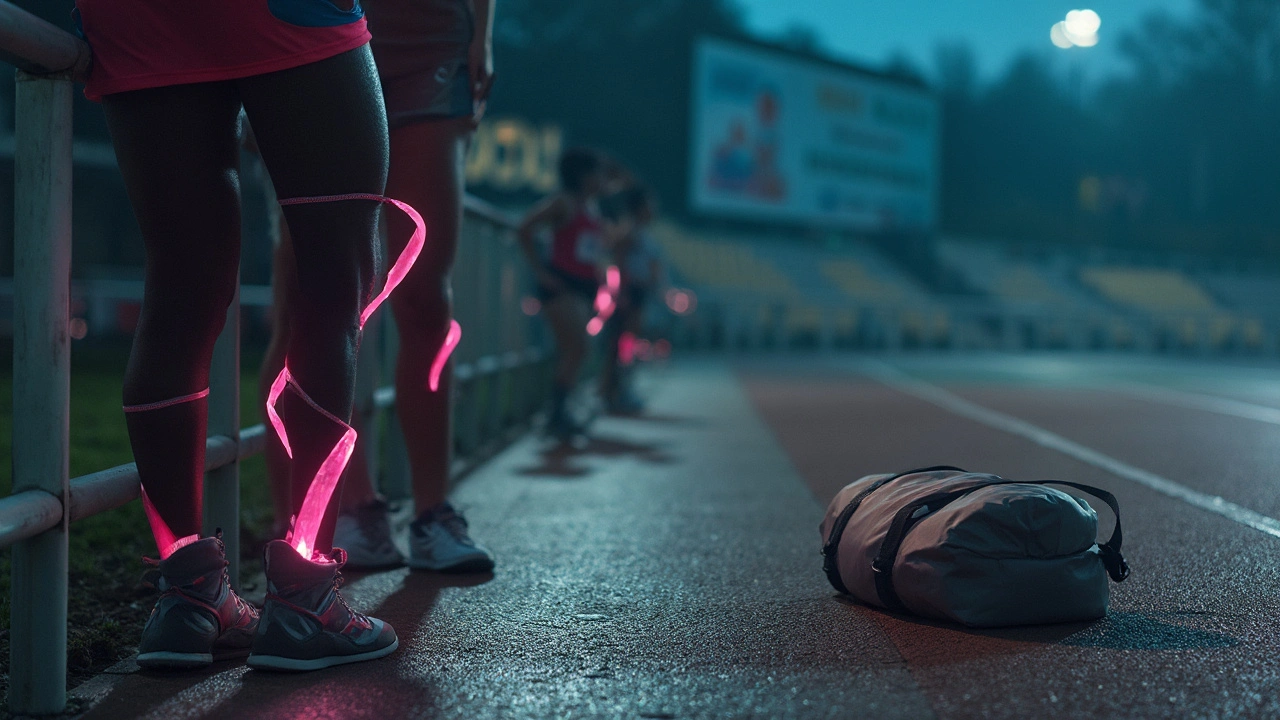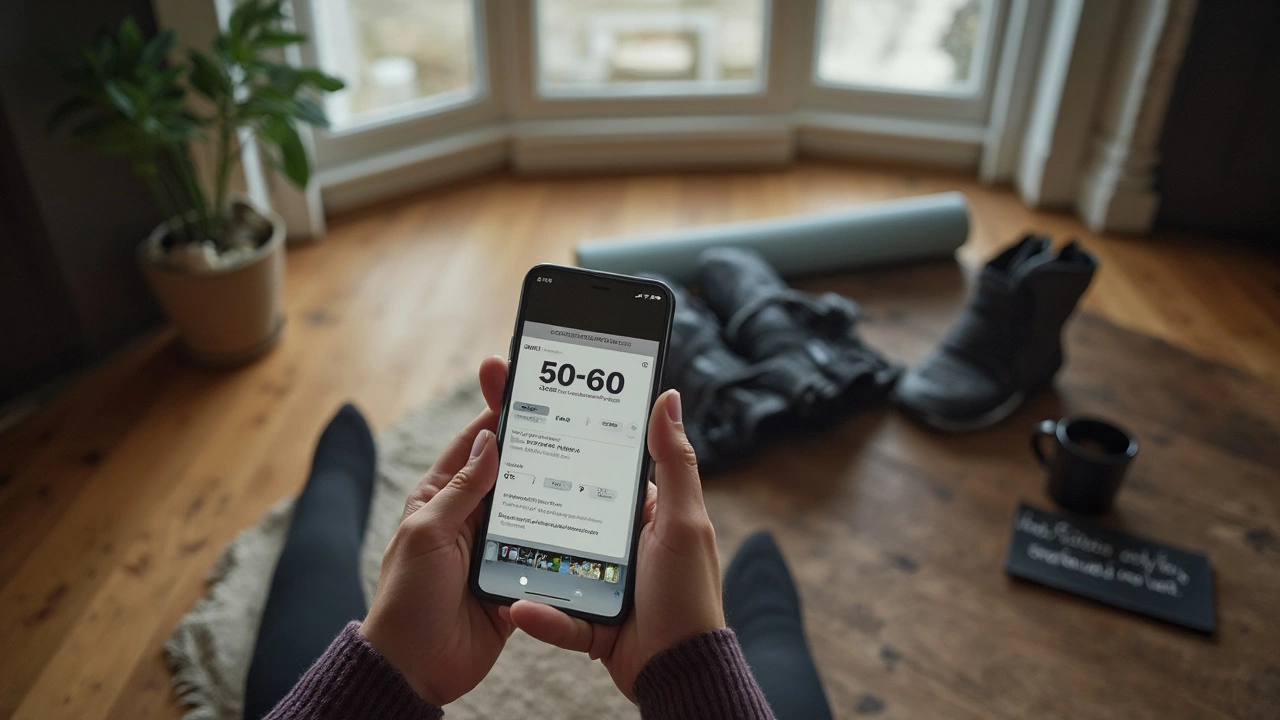Compression Massage for Post-Workout Recovery: Benefits, Protocols, and Risks

- Sep, 3 2025
- 0 Comments
- Cecilia Scripps
You finish a hard session and your legs feel heavy, your head is foggy, and tomorrow’s workout looks shaky. Can a recovery tool actually buy you better training days? Yes-if you use it right. Here’s the honest guide to compression massage: what it can do, where it falls short, and how to make it work in your real week.
Quick reality check: compression won’t magically erase muscle damage. But it can reduce soreness and swelling, improve that “ready to go” feeling, and sometimes protect performance 24-48 hours later. The science calls the effects small to moderate. In practice, small wins add up across a season-especially when Perth heat, back-to-back games, or a PR build are in play.
TL;DR: What compression massage actually does
- Helps most with soreness (DOMS), limb heaviness, and mild swelling by boosting venous return and lymph flow. Expect modest, noticeable relief.
- Performance: mixed. Studies show better perceived recovery and, at times, small next-day benefits. It won’t fix under-fuelling or poor sleep.
- Best use: legs after running, team sport, cycling, or heavy lower-body lifting; also helpful between events on the same day.
- Typical protocol: 20-30 minutes, 40-60 mmHg for legs, within 2 hours post-session; 1-2 cycles per day on heavy days.
- Skip or get medical clearance if you have DVT history, severe peripheral artery disease, uncontrolled heart failure, acute infection, open wounds, or reduced limb sensation.
Evidence snapshot: A 2018 meta-analysis in Frontiers in Physiology found massage was the most reliable for DOMS, with compression showing smaller but real benefits. Reviews in Sports Medicine and the Journal of Strength and Conditioning Research report intermittent pneumatic compression (IPC) improves perceived recovery and reduces swelling, with small or trivial effects on hard performance metrics. The American College of Sports Medicine’s recovery guidance is clear: modalities help, but sleep, nutrition, and load management do the heavy lifting.
How to use compression massage after workouts (step-by-step)
Think of compression as a smart finisher to lock in a session-like cool-down and carbs. Here’s a straightforward way to run it.
- Choose your format. Pneumatic boots or sleeves (IPC) are easiest at home or in the clubroom. Therapist-delivered rhythmic compression is great when you can book it. Static compression garments work too, but their effects are smaller than IPC.
- Time it right. Use within 2 hours post-workout when blood flow and fluid shifts are high. If you miss the window, next morning still helps with DOMS.
- Prep fast. Quick rinse or wipe, then elevate legs slightly if you can. Drink 300-600 ml water with a pinch of salt if you trained in heat (Perth summers… you know).
- Set pressure. For legs: 40-60 mmHg to start. Go 20-40 mmHg for arms or if you’re new. If you feel numbness, pins-and-needles, or throbbing, drop 10-15 mmHg.
- Pick a pattern. Sequential (foot to thigh wave) is the go-to for recovery. Hold times of 30-60 seconds per chamber feel great and drain well.
- Run your session. 20-30 minutes is the sweet spot for most. Post-brutal days (like hill sprints or heavy squats), you can do two 20-minute blocks, separated by a 5-minute break.
- Breathe and relax. Slow nasal breathing and loose shoulders keep your nervous system calm, which helps recovery more than you think.
- Refuel during. Protein (20-30 g) plus carbs (0.8-1.2 g/kg) in the first hour after training still matters more than any gadget.
- Check the skin. After you’re done, skin should be warm and normal in colour. Sharp pain, white patches, or lasting numbness = stop and reassess.
- Log the feel. Rate leg heaviness and soreness before/after (0-10 scale). If you’re not 2-3 points better, adjust time or pressure, or slot compression on a different day.
- Rule of thumb: Legs respond to 40-60 mmHg; stronger athletes may prefer 60-80 mmHg, but higher isn’t always better. Comfort beats brute force.
- Don’t stack too much: If you already did an ice bath or long sauna, keep compression to 15-20 minutes to avoid overloading your skin and vascular system.
- Avoid right before max-effort lifting or sprinting if high pressures leave you “too relaxed.” If you like it pre-session, keep it short (10-12 minutes) and lighter pressure.
Safety red flags (talk to a clinician first): history of deep vein thrombosis, known clotting disorders, severe varicose complications with skin changes, peripheral artery disease, uncontrolled heart failure, acute infections, open wounds, or neuropathy with reduced sensation. Pregnancy isn’t an automatic no, but get the okay from your care provider. If you’re unsure, stay conservative.

Real-world protocols, examples, and pro tips
Here’s how athletes and everyday lifters plug compression into a week that actually exists-work, family, and Perth traffic included.
- Runner after hill repeats or tempo: 10-minute easy jog + walk, quick shower, then 25 minutes IPC at 50 mmHg, sequential pattern. Light calf stretch after. If quads are shattered, add a second 15-minute set that evening.
- Strength lifter after heavy squats or deadlifts: Contrast shower (2 minutes warm, 30 seconds cool x 3), then 20 minutes IPC at 45-60 mmHg. Eat. Sleep 8 hours. Save foam rolling for the next morning to avoid beating up already stressed tissue.
- Team sport (AFL, soccer) between two sessions or a double-header: 15-20 minutes at 45-55 mmHg right after session one. Carbs + electrolytes + compression is a strong trio for fast turnarounds.
- Cyclist after long ride in heat: 30 minutes at 45-55 mmHg with feet slightly elevated, fan on. Add 500-700 ml electrolytes. If you cramp, go lower pressure and focus on fluids and sodium first.
- Travel day: Legs feel “puffy” after a flight? 20 minutes at 40-50 mmHg on arrival or the next morning. Walk, hydrate, and move ankles while the device runs.
Weekly template for a busy block:
- Mon: Lower body lift → 20-25 minutes compression
- Tue: Easy run/skills → skip or 10 minutes light if you love the ritual
- Wed: Intervals or hard conditioning → 25-30 minutes compression
- Thu: Upper body/lite skills → skip
- Fri: Off or mobility day → optional 15 minutes if legs feel heavy
- Sat: Long run/match → 25-30 minutes compression, repeat 15 minutes in the evening if sore
- Sun: Recovery swim or walk → skip compression or 10-15 minutes low pressure
What the science actually says (plain English):
- Massage and compression lower perceived soreness reliably. A 2018 meta-analysis in Frontiers in Physiology ranked massage top for DOMS, with compression behind it but still helpful.
- Intermittent pneumatic compression often improves how recovered athletes feel and reduces limb swelling. Randomized crossover trials in the Journal of Strength and Conditioning Research report better leg “freshness,” with little to no change in objective power tests 24 hours later.
- Compression garments offer mild benefits. A 2021 review in Sports Medicine found small improvements in soreness and sprint recovery, especially when worn for hours post-exercise.
- Lactate isn’t “toxic.” Your body reuses it as fuel. Compression helps fluid movement; it’s not a toxin flush.
- Big rocks win. ACSM and IOC position statements keep repeating this: sleep, fuelling, and smart training loads matter most. Modalities are the garnish.
Pro tips that make a difference:
- Stack it with carbs: A banana and a protein shake during compression beats a perfect pressure setting on an empty tank.
- Mind the heat: In Perth summers, keep the room cool. Overheating during compression can leave you lightheaded.
- Go around injuries: If a knee is angry, keep the cuff below the joint or skip that limb. Compression isn’t a fix for joint pathology.
- Use it when it counts: Heavy blocks, tournament weeks, back-to-back long runs. On easy weeks, save the time for mobility or sleep.
- Manual vs device: A good therapist can mix compression with gliding and stretching, which often feels better around hips and adductors than boots alone.
- Pre-session use: If you like it before training, keep it short (8-12 minutes) and lower pressure so you don’t feel sluggish.
Checklists, decision guide, mini‑FAQ, and next steps
Quick checklist: Is compression a good call today?
- You did a hard lower-body session or long run/ride.
- Legs feel heavy or swollen, not acutely injured.
- You can spare 20-30 minutes within 2 hours post-session.
- You’ve eaten or can refuel during the session.
- No red flags: no history of clots, severe vascular disease, or acute infection.
Decision guide (simple):
- Main issue = soreness/heaviness: Use IPC 20-30 minutes at 45-60 mmHg today and/or tomorrow morning.
- Main issue = joint pain or sharp pain: Skip compression. Get assessed. Use gentle movement and see a clinician.
- Main issue = big match tomorrow: Use IPC today (25 minutes) and a shorter, lighter session tomorrow (10-12 minutes).
- No device? Legs up the wall for 10 minutes + walk + hydration. Wear light compression socks for a few hours.
Mini‑FAQ
- Does compression flush toxins? No. There’s no toxin purge happening. It helps fluid movement and can lower swelling and soreness.
- How often should I use it? 2-4 times per week during hard blocks; daily in tournament weeks. On deloads, save the time.
- What pressure is best? Legs usually feel good at 40-60 mmHg. Go lower if new or sensitive; go higher (up to ~80 mmHg) if you’re experienced and comfortable.
- Is 60 minutes better than 30? Not usually. Most benefits land in 20-30 minutes. Longer can numb you out without better outcomes.
- Boots vs compression tights? Boots (IPC) give a stronger effect in a short time. Tights help if worn for hours, like after travel or work.
- Can I combine with sauna or ice? Yes, but don’t overdo. If you used sauna or cold immersion, keep compression shorter (15-20 minutes) and watch how you feel the next session.
- Pregnant? Get your provider’s okay. Light pressures are sometimes fine, but you need personalized advice.
- What about arms? Use 20-40 mmHg for 15-20 minutes after big pull days or swimming. Arms numb more easily-stay conservative.
Troubleshooting
- Numbness or tingling during a session: Pressure is too high or cuffs are misaligned. Stop, lower 10-15 mmHg, refit, and try again.
- No change in soreness after a week of use: Shorten sessions to 20-25 minutes and shift timing earlier (within 60 minutes post). Make sure you’re eating and sleeping well.
- Skin marks or irritation: Wear thin socks/leggings under the cuffs, clean the liners, and moisturize dry skin. If redness lasts hours, drop pressure or take a break.
- Feeling sluggish next workout: Your pre-session compression might be too long or too intense. Cut it to 8-12 minutes at low pressure or move it post-session.
- Cramping: Usually hydration and electrolytes, not compression. Fix fluids and sodium first, then re-test compression at lower pressure.
Next steps
- Beginner on a budget: Start with legs-up-the-wall (10 minutes), light walking, compression socks for a few hours post-run, and consistent carbs + protein. Try a gym or clinic session with boots before buying.
- Time-poor parent/shift worker: Slot 20 minutes right after your shower while you eat. Two quality sessions per week beat five rushed ones.
- Competitive athlete: Periodize compression in hard blocks (3-4 uses/week), taper to short, light sessions pre-race, and log soreness and jump-height to track what actually helps you.
- Hot-climate trainee (hi, WA): Prioritize cooling and hydration. Use a fan during compression. Add electrolytes on long, sweaty days.
One last nudge: the tool works best when the basics are dialed. Nail your sleep window, eat like recovery matters, and use compression to smooth the edges. That’s how you show up better tomorrow without burning today’s match.